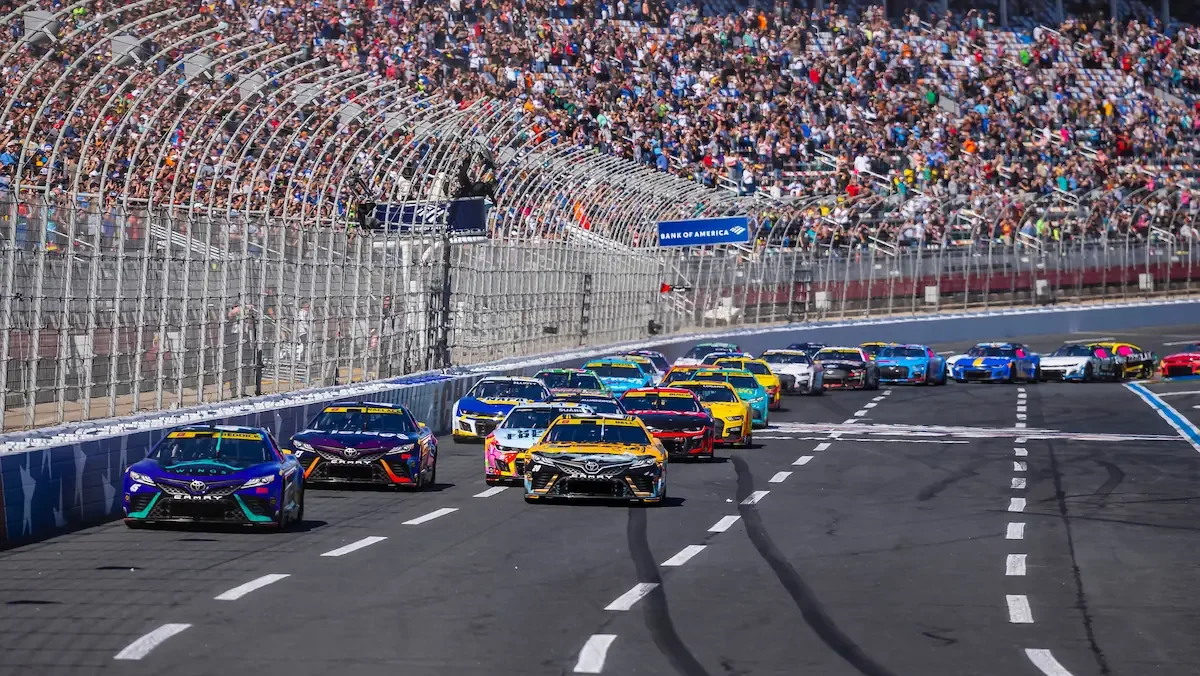Latest Sports Picks, News and Previews

NASCAR, the National Association for Stock Car Auto Racing, is one of the most popular motorsport organizations in the world. It features a series of stock car races, with the top series being the NASCAR Cup Series. Understanding how NASCAR works involves grasping the basics of its races, points system and especially its unique playoff format.
NASCAR races occur on multiple tracks, including oval tracks, road courses and superspeedways. There are 26 regular-season races, with the finale at Daytona. Each race consists of several stages, with drivers earning points based on their performance in each stage and their final race position. The driver who finishes first in the final stage is declared the winner.
The points system was designed in NASCAR to reward consistency and victories. NASCAR Cup Series events can have up to 40 cars in a race, and points are awarded to drivers based on their finishing position in each race, with additional points for winning stages and leading laps.
40 points are awarded to the winning driver, 35 to second place and one point fewer is awarded to each placement until 36th. Finishers 36-40 in a given race earn one point each. At the end of the regular season, the accumulated points determine the standings and who advances to the playoffs.
The NASCAR playoffs, also known as the Chase for the Cup, are a series of elimination rounds culminating in the championship race. Here’s how the qualifying format for the NASCAR playoffs works:
To be eligible for the playoffs, a driver must:
At the end of the regular season, the top 16 drivers qualify for the playoffs. Their points reset to a base of 2,000, with additional points added for regular-season wins and stage wins. This reset ensures all 16 drivers start the playoffs with a relatively clean slate while still rewarding regular-season performance.
The NASCAR playoffs are four rounds, each consisting of a series of races where drivers must perform well to advance to the next round.
The playoffs begin with the Round of 16, which includes three races. The 16 drivers compete to earn points, and at the end of this round, the four drivers with the lowest point totals are eliminated. The remaining 12 drivers advance to the next round.
The Round of 12 also consists of three races. Points are reset again, with additional points for wins in the previous round. The four lowest-ranked drivers at the end of these races are eliminated, leaving eight drivers to advance.
In the Round of 8, three more races determine which four drivers will move on to the final round. As before, points are reset and accumulated over these three races. The four drivers with the highest points totals advance to the Championship 4.
The final race of the season determines the champion. The Championship 4 drivers compete in a single race, with the highest finisher among them crowned the NASCAR Cup Series Champion. Unlike previous rounds, there are no points resets or additional points; it’s a straightforward race to the finish.
NASCAR’s qualifying format for the playoffs is designed to ensure the best drivers throughout the season have a shot at the championship while still adding excitement and unpredictability to the final races. Understanding the points system, eligibility criteria, and the structure of the playoff rounds provides a complete picture of how NASCAR works and what makes it a thrilling motorsport to follow.

Zach has been a published sports writer since 2018 specializing in college football & basketball, MLB and NFL content for multiple publications.